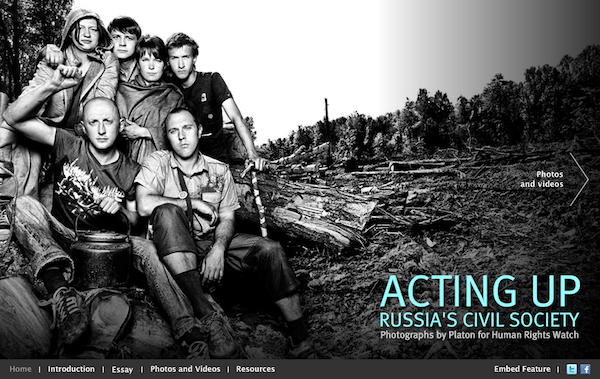

Media from nonprofits has boomed in recent years. But that doesn’t just mean the ProPublicas and Texas Tribunes of the world — nonprofit advocacy groups are also inching their way into the media business. Instead of relying on news organizations to transmit their messages to an audience, some are focused on making that connection themselves.
“We consciously ape the style of media in our communication in order that what we produce looks more like journalism,” said Carroll Bogert, deputy executive director for external relations at Human Rights Watch. Or, to put it another way, Bogert said, “We’re a nonprofit and we’re moving into the media business.”
This cut-out-the-middle-man move is growing more common thanks to cheap(er) delivery platforms and an unstable professional media environment. (With our partners at Penn Annenberg’s Center for Global Communication Studies, we ran a series on the subject back in 2009.) Professional sports teams have their own journalists. And when groups like Invisible Children want to spread the message about the use of child soldiers in Uganda and the Congo, they create a YouTube video like KONY 2012. Though Bogert would argue Human Rights Watch doesn’t share Invisible Children’s methods, what they do have in common with many nonprofits is the desire to get their message directly in front of the right audience.
Bogert was at the MIT Media Lab on Monday speaking about the how Human Rights Watch has realigned itself for a changing media. (A video is available here.) HRW’s standard news release has been replaced with something that looks more like an AP story, complete with lede and nut graf. Photos are shot and delivered from around the world, by photographers with journalism backgrounds like Brent Stirton and the late Tim Hetherington. HRW now produces video features that can work as pre-packaged segments or supplemental video for broadcast. The videos are available in whole or broken up into disaggregated clips.
In other words, their message, whether it’s about the military’s use of schools in Yemen, or abuses to indigenous people in Chile, gets delivered in the most journalism-esque way possible. One of the ways they do this is by hiring former journalists — Bogert’s one, having spent more than a decade covering international stories for Newsweek. Mimicking the look and quality of journalism increases the chances of their message getting across, Bogert said. “It’s meant to look like a wire service story, so that when it arrives in the inbox of a wire service reporter, it moves seamlessly into the mainstream media,” she said.
And it’s working. Bogert said HRW’s media mentions rose steadily in 2012, appearing in The New York Times almost daily. Stories from Human Rights Watch appear in Google News alongside other headlines. Broadcasters like the BBC and Britain’s Channel 4 have aired its video. They’ve also won a Peabody award for their multimedia.
The changes taking place in journalism have allowed nonprofit advocacy groups to better position themselves to deliver their message. At the same time, the web and social media have provided an alternate channel to spread the word, Bogert said.
“I think the question for us is what is the right balance between the short-form content that social media requires and the long-form content by which Human Rights Watch has made its name,” she said.
But the same media vacuum that allows for Human Rights Watch also provides for something like KONY 2012. For a brief period in March, the video appeared to capture the attention of all media, social or traditional, until questions arose about the substance of claims made in the film.
Bogert acknowledged the effect a film like KONY can have on raising awareness to a mass audience, but she said Human Rights Watch would stay away from sensationalist methods. One reason is that the nonprofit doesn’t really aim for a mass audience: Its targets are presidents, prime ministers, and others with the ability to make change happen. By taking a more journalistic approach, they’re more likely to find their way into the media diet of the powerful. “We want to make sure we’re occupying all the information channels flowing into the brain of a decision maker,” she said.
As nonprofits like Human Rights Watch adopt the look and feel of journalism, Bogert said she has some concerns about the practice, even if it achieves the organization’s goals. Though HRW produces reports that look like news stories, she’s still hesitant to call it journalism. Still, the two have something in common, she said.
“The act of making our information mobile and travel is the means by which it gets impact,” she said.